LüDERITZ TO WALVIS BAY - Guided Self-drive tour through the oldest desert on earth
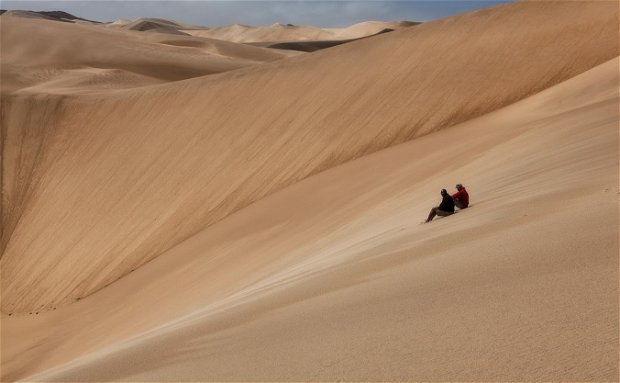
Go off grid for a guided self-drive 4x4 adventure from Lüderitz to Walvis Bay through the oldest desert on earth, the Namib.
This fully catered and guided adventure is the ideal opportunity for visitors to Namibia to visit one of the last largely unexplored areas on our planet. Get to drive over some of the highest dunes, marvel at spectacular sceneries and glamp under the Southern hemisphere's glittering stars.
The Namib Desert is one of the driest places on Earth. This Martian-like landscape of towering sand dunes, rugged mountains and gravel plains stretches some 81,000 sq km across three countries. The Namib Desert is believed to be the world’s oldest desert and it has been arid for at least 55 million years. The convergence of the Benguela upwelling and the hot interior have maintained, and perhaps increased, this aridity in recent times, but they did not generate the aridity. The region, isolated between the ocean and the escarpment, is considered to be a constant island of aridity surrounded by a sea of climatic change. The arid conditions probably started with the continental split of West Gondwana 130 million to 145 million years ago when this area shifted to its present position along the Tropic of Capricorn. This lengthy dry period has had a profound influence on the region’s biodiversity. The region has remained a relatively stable center for the evolution of desert species. This has resulted in a unique array of biodiversity with high levels of endemism and numerous advanced adaptations to arid conditions.
The Namib Desert is home to a number of unusual species of plants and animals that are found nowhere else in the world. One of these is Welwitschia mirabilis – the National Plant of Namibia - a shrub-like plant that grows just two long leaves continuously throughout its lifetime. These leaves may grow to be several meters long and over time become gnarled and twisted from the desert winds. They are the longest-lived leaves of any member of the plant kingdom. It is estimated that the largest of these plants are about 2,500 years old.
Dense fogs along the coast and the freshwater they contain are the life essence of the Namib. The dew that condenses on desert grasses and on the bodies of smaller creatures is what sustains many of these animals. Others take advantage of the few muddy water holes, which may draw gemsbok, ostriches, sand grouse, vultures, and warthogs.
Most of the animals and plants that survive in the Namib do so by unique adaptations. The gemsbok, for example, also known as the oryx, has a lighter coat than any long-horned antelope subspecies and an intricate system of blood vessels and nasal passages that cool its blood before it reaches the brain. They dig for underground water, drink from watering holes, and feed in the early morning on plants with high moisture content. Its numerous adaptations allow it to tolerate high temperatures and go days without water.
There are almost 70 reptile species in the ecoregion, of which five are found only in the Namib Desert. The desert is also home to a large number of small rodent species that occur among the rocky habitats in the western deserts, in the sand dunes, and in the vegetation of the gravel plains.
Namib-Naukluft National Park, one of Africa's largest, contains a group of huge sand dunes, which at nearly a thousand feet (300 meters) high are the tallest sand dunes in the world.
The interaction between the water-laden air coming from the sea via southerly winds, some of the strongest of any coastal desert, and the dry air of the desert causes immense fogs and strong currents in which sailors easily lose their way. Along with the Skeleton Coast farther north, the area is notorious as the site of many shipwrecks.
The border of the desert to the north and east is the foot of the Great Western Escarpment of Namibia, atop which more humid lands prevail. But in the south, a gradual transition merges the Namib with the Karoo and Kalahari deserts of the interior.
The crests of the dunes are aligned in a marked northwest-southeast orientation. These crests form crosswise to the formative wind. The dunes act as obstacles, and obstacles cause winds to be deflected significantly to the right in the Southern Hemisphere—in effect reorienting the southerly wind as a southwesterly wind.
Climatically, the Namib is a contradictory area: It is almost rainless, yet its air is normally at or near the saturation point, and fog is very common. Temperatures in the coastal area are mild at all seasons, ranging between 14° to 28° C in the warm season (December) and between 9° to 14° C in the cool season (July). On the coast, humidity is 100 percent for 19 hours per day in summer and for 11 hours in winter. At the inner edge of the desert, the air is much drier, fog is virtually unknown, and the humidity seldom exceeds 50 percent. This is nevertheless fairly high for a desert region.
Itinerary
Day 1
After breakfast we ensure that all vehicles are refuelled and will depart Lüderitz at 09h00. We will backtrack along the road to Aus for about 30km, whereafter we will turn North into uncharted terrain where the adventure begins. After passing through a section of flat stony desert, we will reach the Khoichab pan, from where Lüderitz gets much of its water supply, after 20km.
We will briefly stop here to deflate tyres and conduct a safety briefing. We continue along a section of soft sand with characteristic blades of grass. Late afternoon we will set up camp and prepare dinner.
Day 2
After breakfast on day 2 we will proceed northwards, visiting remnants of early diamond mining pioneers. The discovery of diamonds in 1908 around Kolmanskuppe resulted in an uncontrollable diamond rush forcing the Government to establish the “Sperrgebiet” between 26-degree (Gibraltar) and the southern border stretching 100 kilometres inland. Prospectors were forced to turn northwards beyond the Sperrgebiet. This resulted in the discovery of diamonds at Spencer Bay in December 1908 and between Meob and the Conception Bay area (Diamond area no 2). This resulted in a total of 5000 diamond claims being registered in 1909 and hopeful prospectors tried their luck at Saddle Hill and Spencer Bay and via Swakopmund and Sandwich Harbour southwards towards Meob Bay.
Today only some remnants of the activities are visible and are deteriorating at an alarming rate. The area that we will enter into is well known in Namibian diamond operations through the efforts of the remarkable Mose Kahan. The unsinkable Mose was born in Königsberg, Prussia and after immigrating to South Africa, he became involved in prospecting and mining. His application for a concession in Diamond area no 2 was successful and he named his claims Saddle Hill Ophir and Atlantis. To reach his claims with food and mining supplies, Kahan had to make his way through shifting dunes with transport available in those years, which was indeed a hazardous undertaking. After World War II Kahan bought some Ford“stompneus” trucks from surplus war stock and fitted them with Dakota DC3 aircraft tyres. With these low-pressure aircraft tyres he was able to bring supplies and equipment to Saddle Hill. However one of these trucks, nick named Suzie as well as a Bulldozer, pulling trailers with supplies and equipment close to the Uri-Haugab Mountains unfortunately had to be abandoned in the dunes.
We journey through the Uri-Haugab valley in a north-westerly direction and will camp just before reaching Sylvia Hill.
Day 3
After breakfast we will visit Sylvi Hill with its 60,000 resident Cape Fur Seals.
From here we will proceed north to Meob through the dune belt. Dunes are getting progressively higher and driver experience and skills acquired during the previous two days will be tested and honed to perfection.
We will reach the Namab tented camp near Meob bay late afternoon. It is here that we will overnight for the next two nights. Accommodation will be in tents. We will sit under the stars gazing at the universe, while our guides will prepare dinner over a fire.
Day 4
We will spend day 4 exploring the rich diamond history in the area between Meob and Conception bay. Our first stop is Meob Bay, which served as a landing site for persons and equipment during the diamong rush at the beginning of the last century. Many relicts from that time can still be observed, such as rowing boats with which passengers were taken ashore, and the police station which has been transformed into a small museum.
We then head inland to visit the – now abandoned - mining settlements of Grillenberger, Charlottenfelder and Holsatia. The discovery of diamonds in 1908 around Kolmanskuppe resulted in an uncontrollable diamond rush forcing the Government to establish a no-entry area, the “Sperrgebiet”, between 26-degree S and the southern border of the country, stretching 100-kilometer inland. Prospectors were forced to turn northwards beyond the Sperrgebiet. This resulted in the discovery of diamonds at Spencer Bay in December 1908 and between Meob and the Conception Bay area (Diamond area no 2). In the area between Conception Bay and Meob Bay the mining settlements of Holsatia, Charlottenfelder and Grillenberger were established and no form of engine-driven transport was available during the first 15 years. One sample of an oxwagen fitted with special wide iron bands to make transportation in sandy areas is visible north off Grillenberger.
Day 5
We commence our journey to Walvis Bay during the morning of day 5 with a drive along the beach until we reach the wreck of the “Eduard Bohlen”, a passenger and cargo ship that hit a sandbank near Conception Bay on 9th September 1909 and lies now about 600m inland. This 310 foot, 2,272 tonne ship was underway from Swakopmund in Namibia to Cape Town.
After a further drive along the beach we will encounter massive dunes progressing increasingly closer to the beach. It is here that we will visit our final shipwreck, the “Shawnee”, a tug that ran aground in mysterious circumstances on 6th February 1976. Now wedged on a narrow stretch between the ocean and the dunes, it is home to a variety of seabirds and black-backed jackal.
We spend some time at this wreck.
We journey on passing ‘Langewand’ where massive dunes end in the sea, given a very limited time span to negotiate this stretch of beach. After Langewand the trail once again leads into the dunes, circumnavigating the Salt Pans ‘extensions’ of Sandwich Harbour. The dunes are still getting progressively larger to offer an ever-changing new experience of ultimate dune driving. We regularly stop for photographs along the route and take in beautiful sceneries, while spotting wild animals that have made the area’s inhospitable terrain their home.
We arrive back in Walvis Bay sometime in the afternoon, whereafter we will check guests into their place of accommodation, which is included in the tour package. We will entertain our guests on the evening of day 5 with a dinner in Walvis Bay.
Rates
The Rack Rate for this tour per person is as follows:
Adults: N$24,900
Children (U/12):N$21,900
CONDITIONS:
- All rates are valid until 31st December 2024.
- All rates include 15% VAT.
- For excursions we need a minimum of 14 persons, and a maximum of 12 vehicles is allowed.
- The rates includes the first night accommodation and dinner in Lüderitz, breakfast and dinner each day, permits, accommodation and dinner on the last night in Walvis Bay, the catamaran cruise and a litle gift.
- We supply all cutlery for desert dinners and breakfasts.
- Vehicles, Fuel, camping equipment and lunch is for own account.
- 100 % cancellation fees will be charged for no shows.
- Invoice payments to be settled before 30 days.
- We will be open on 25 and 26 December and 01 January.
- Please advise in advance if guests need any physical assistance. We do cater for persons with disabilities.
- We specifically also cater for vegetarians, vegans and persons with gluten sensitivities or other allergies.
- Please advise at time of booking.
- Please advise at time of booking if a special occasion, such as a birthday or anniversary, is being celebrated on board.
- Kindly note that any transfers/pick-ups are not included in the activity rate - however, it can be arranged at a small additional charge.
- Due to the nature of the excursions we can regrettably not allow any pets.


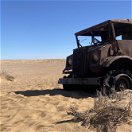
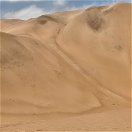
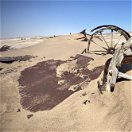
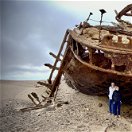
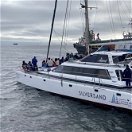
Share This Page